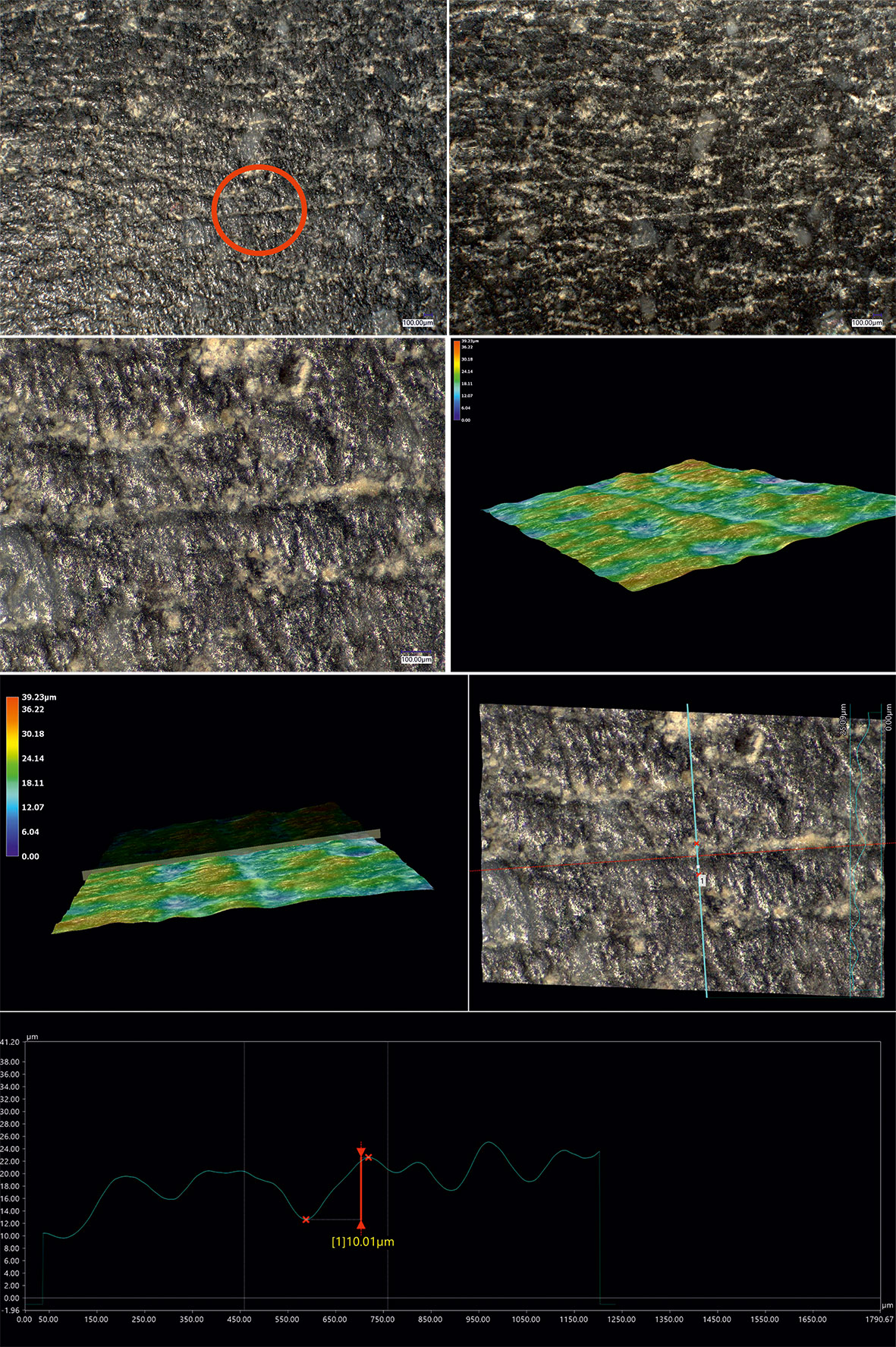For Neolithic mining (and the initial preparation of the mined raw materials on site) various tools made of particular materials (antler, chert and other rocks) were employed. Additional to a typological classification, use wear analyses allow reconstructing and differentiating their original function.
Publication:
- O. Schmitsberger, Erster Nachweis von Rillenschlägeln im neolithischen Hornstein-Bergbau Ostösterreichs (Mauer-Antonshöhe, 23. Wiener Gemeindebezirk). Fundberichte aus Österreich 58/2019, 2021, 421 – 440.
Studying the tools used for Neolithic mining and their particular function is essential given their central role at the very beginning of the production sequence for chipped stone tools. This knowledge is crucial for understanding primary raw material acquisition and the subsequent chaîne opératoire from the production of the debitage to the finished products, their use and possible distribution.

Initial situation
Until now, antler picks and hammer stones of various sizes used for mining were only summarily presented but never studied in detail in Austrian archaeology. The greatest number of a wide array of Neolithic mining tools exists from the Stone Age mining site at the Antonshöhe in Vienna-Mauer. However, the assemblage is spread across diverse public and private collections, partly or entirely unpublished, and has never been catalogued and scientifically studied as a whole.
›Life-cycle‹ of artefacts
In order to distinguish prehistoric mining tools and establish their specific function, a detailed analysis of traces relating to their production as well as their use is required. We have to acknowledge that prehistoric tools were not static but involved in dynamic processes, during which the shape of an object was subjected to constant change in the course of its use. An object’s life cycle includes the natural mechanical stress and consequently alterations of the raw material, the production, its primary use, damages, reworking, secondary and possibly tertiary use, repeated alteration and damaging through use, and finally discarding. Tracing this life cycle of individual tools is necessary to gain a holistic understanding of working processes. In the archaeological record we are only able to capture the end state of an artefact, which can significantly differ from its original appearance.
Neolithic grooved stone hammers in Austria
The identification of grooved stone hammers from the Antonshöhe can be regarded as a little sensation. Such tools are commonly known from Neolithic mining sites in western and southern Europe, in Austria however they were so far only recognised in the context of Bronze Age copper mining. Nonetheless, they have to be expected where ever the method of pounding and crushing was employed for mining hard rocks.
Current knowledge and future prospects
In a first step, the mining tools from a private collection were analysed. The gained insights will serve as a reference and the foundation for studying further Neolithic assemblages from mining contexts – primarily the material from the Antonshöhe housed in other collections, and eventually from other mining sites in eastern Austria. It is clear that complex artefact biographies result in unusual tool shapes, which elude one-dimensional interpretations. Their reconstruction necessitates detailed macro- and microscopic analyses of all production- and use traces and all characteristics including natural and anthropogenic modifications in order to achieve a conclusive history of the use of an object.

